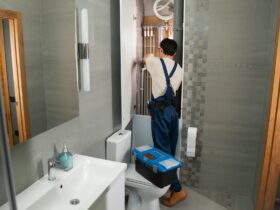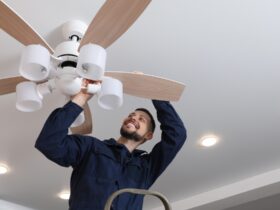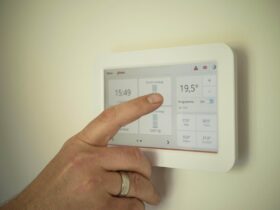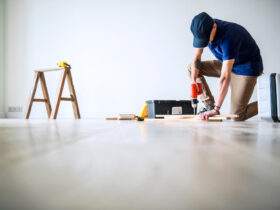Have you ever noticed how your bedroom feels like an icebox while your living room feels like you’re sitting in an oven? Or maybe your kitchen stays nice and cool, but upstairs feels unbearable during summer? You’re definitely not imagining things. Almost every house has those problem rooms that just won’t stay the right temperature, no matter what you do with the thermostat.
This temperature imbalance happens in houses everywhere, and it’s actually pretty normal. But that doesn’t mean you have to live with it forever. Once you understand why it happens, you can figure out how to fix it and make your whole house more comfortable.
How Your House Actually Heats and Cools
Your heating and cooling system works kind of like your body’s blood circulation. Just like blood needs to flow evenly to keep all parts of your body healthy, air needs to move properly throughout your house to keep every room comfortable. When something blocks or slows down that airflow, some rooms end up getting too much heated or cooled air, while others barely get any.
Most houses use something called forced air systems. These systems push air through ducts hidden in your walls, floors, and ceilings. The air comes out through vents in each room, then gets sucked back through return vents to start the cycle over again. When this system works perfectly, every room should feel about the same temperature. But houses are complicated, and lots of things can mess up this perfect balance.
The Usual Suspects Behind Temperature Problems
Ductwork Issues
The ducts that carry air around your house are probably the biggest cause of uneven temperatures. Over time, these ducts can develop leaks, get crushed, or become disconnected. When air leaks out before it reaches certain rooms, those spaces end up getting much less heating or cooling than they need. Professional services like Platinum Air Heating & Cooling can inspect your ductwork and fix these hidden problems that you might never notice on your own.
Ducts can also get blocked by things like insulation, debris, or even small animals that find their way inside. Sometimes ducts were designed poorly from the start, with some rooms getting much smaller ducts than others. This means some rooms naturally get more airflow while others struggle with weak air circulation.
Insulation Problems
Think of insulation like a thick winter coat for your house. Just like you’d feel cold if your coat had holes in it, your rooms will have temperature problems if the insulation isn’t doing its job properly. Older houses often have insulation that has settled, gotten wet, or just worn out over the years.
Rooms that sit above garages, over basements, or near outside walls are especially likely to have insulation issues. These spaces lose heat faster in winter and gain heat faster in summer because they’re closer to the outside temperature. If the insulation in these areas is thin or damaged, those rooms will always feel different from the rest of the house.
Sun Exposure and Window Placement
Rooms that face south or west get hammered by direct sunlight for hours every day. This solar heat gain can make these rooms much warmer than the rest of your house, especially during afternoon hours. Meanwhile, rooms on the north side of your house might stay cooler because they never get direct sun.
The type and age of windows makes a huge difference too. Single-pane windows or old windows with broken seals let heat transfer much more easily than newer, energy-efficient windows. Rooms with lots of windows will always be harder to keep at a consistent temperature.
Air Circulation Problems
Sometimes the issue isn’t with your heating and cooling system at all. Poor air circulation can make rooms feel stuffy and uncomfortable even when the temperature should be fine. Rooms that are far from return vents, have doors that are usually closed, or have furniture blocking air vents often develop circulation problems.
Ceiling fans can help with this issue, but only if they’re running in the right direction. During summer, fans should spin counterclockwise to push air down and create a cooling breeze. In winter, they should spin clockwise to pull cool air up and push warm air down from the ceiling.
Quick Fixes You Can Try
Before calling in professionals, there are some simple things you can test. Check that all your vents are open and not blocked by furniture, curtains, or dust buildup. Make sure interior doors stay open so air can flow between rooms. Change your air filter if it looks dirty, since clogged filters make your system work harder and can reduce airflow to some rooms.
You can also try adjusting the vents themselves. Many vents have dampers that let you control how much air comes through. Partially closing vents in rooms that get too much airflow might help redirect more air to rooms that need it.
When to Call for Help
If simple fixes don’t solve your temperature problems, the issue probably needs professional attention. Problems with ductwork, insulation, or your heating and cooling system require special tools and expertise to diagnose and repair properly. A professional can also check things like refrigerant levels, system capacity, and whether your equipment is the right size for your house.
Making Your Whole House Comfortable
Temperature imbalances are frustrating, but they’re usually fixable once you identify the root cause. Whether it’s sealing duct leaks, adding insulation, or upgrading your system, the right solution can make every room in your house feel comfortable year-round. You shouldn’t have to wear a sweater in one room and shorts in another just because your house can’t maintain consistent temperatures.






Leave a Reply